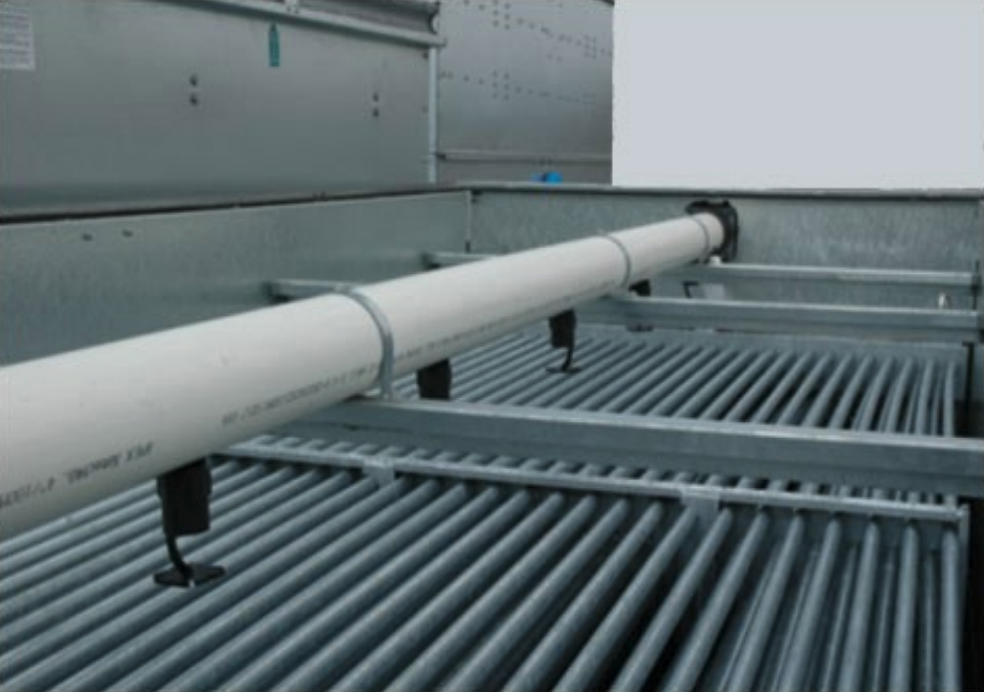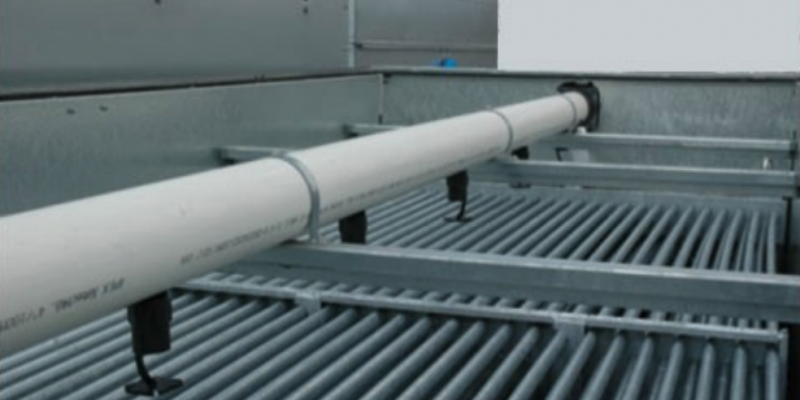
Operating an Evaporative Condenser
Evaporative condensing units are capable of running with or without water, throughout the year, depending on ambient conditions. When you’re ready to run your evaporative condenser with water, you may face this decision: Which to run first, the spray pump or the fan?
Because the spray pump has a smaller motor and is cheaper to run, you may be tempted to run the spray pumps first. However, there’s more to this decision than meets the eye.
The surface temperature of the tubes will depend on many factors. If they’re hot and they’re sprayed with cool water, this will cause rapid evaporation which will leave scale deposits on the surfaces. Such deposits severely impact heat transfer efficiency. All manufacturers’ instructions emphasize the need for good water treatment, and they also advise avoiding continuous wetting and drying of heat transfer surfaces for this reason.
Following some simple startup procedures can keep your system efficient, and as always, please refer you to manufacturers’ instructions.
Reduce Surface Temperature Before Spraying
Here’s a cardinal rule to guide you: The hotter the heat transfer surface, the higher the Delta T for the water, the higher the deposition rate, and the more the stress on your water treatment program. So always try to reduce the surface temperature before water hits the heat transfer surface

Here are some guidelines from Chemtex for a variety of scenarios
General Evaporative Condenser Sequence:
– If the system is off with no load: Start the water pumps, then the fans, then the refrigeration system.
– If the system has been running with refrigerant through it, but no water or fans: turn the fans on first, then the water. Cool the tubes before running.
Two-Fan Evaporative Condenser Units
Sequence of operation for two-fan units with two-speed motors during peak load:
- Both fan motors on full speed – full water flow over both cells
- One fan motor on high speed, one fan motor on low speed – full
- water flow over both cells
- Both fan motors on low speed – full flow over both cells
- One fan motor on low speed, one fan motor off – full water flow over both cells
- Both fan motors off – full water flow over both cells
- Both fan motors off – full single cell flow through one cell
Multi-Fan with VFD Evaporative Condenser Units
Sequence of operation for multi-fan units with a VFD (variable frequency drive) during peak load:
- Synchronize all VFDs to speed up and slow down uniformly.
- Preset a shutoff point for the VFDs to prevent water temperatures from becoming too cold and to prevent the drive from trying to turn the fan at near zero speed.
- Operating below 25% of motor speed achieves very little return in fan energy savings and capacity control. Check with your VFD supplier to determine if operating below 25% is possible.
Basin water temperature is typically not permitted to get below 40ºF to prevent freezing. This is normally accomplished with the use of optional basin heaters.
Use BMS to Guide Evaporative Condenser Operations
While you may be motivated to run the small spray pump first to save money, this isn’t a simple equation. Many factors are involved. Your BMS (building management system) can be a powerful tool. We recommend you use its fullest capabilities to help operate these types of towers while minimizing energy consumption and preventing scale from forming.


/NQA-ISO-9001-Logo-ANAB.jpg)